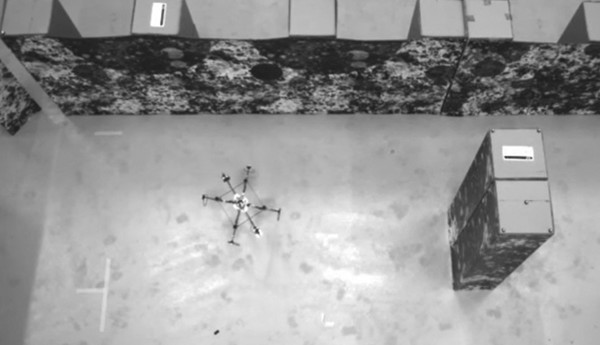Composite Eyes for Drones

As an application of drones, one often hears of reconnaissance missions in inaccessible locations. But there is much progress to be made to avoid these vehicles getting stuck there if the pilot in control loses contact. To give them a good autonomy and increase their chances of surviving intact, the drones have to have good vision, without using much computing power, so as not to compromise their miniaturisation.
As an application of drones, one often hears of reconnaissance missions in inaccessible locations. But there is much progress to be made to avoid these vehicles getting stuck there if the pilot in control loses contact. To give them a good autonomy and increase their chances of surviving intact, the drones have to have good vision, without using much computing power, so as not to compromise their miniaturisation.
Darius Merk, who is passionate about robotics and a Physics student at the Laboratory of Intelligent Systems at EPFL, offers as part of his Master’s Thesis, a solution inspired by the vision of insects. Completely autonomous, the drone he is working on must detect obstacles itself. Human stereoscopic vision allows us to appreciate depth and distance, but the calculation power required to simulate human eyesight with an on-drone camera requires having a small on-board computer, which hinders miniaturisation.
The solution foresees a vehicle which sees with compound eyes; in fact, thanks to the optical flow between facets of the eye (high time definition), insects navigate by evaluating the movement of an image: a far object moves more slowly from one facet to others than a near object. To get information on the environment all around a drone, two cameras of 15g are sufficient, one in front, the other at the rear, The calculating power needed is low, the miniaturisation easier. To assist rescuers in reconnaissance in difficult-to-access locations a drone which is light, autonomous and capable of navigating round obstacles, can follow a programmed course and bring back videos or take photos.
Darius Merk, who is passionate about robotics and a Physics student at the Laboratory of Intelligent Systems at EPFL, offers as part of his Master’s Thesis, a solution inspired by the vision of insects. Completely autonomous, the drone he is working on must detect obstacles itself. Human stereoscopic vision allows us to appreciate depth and distance, but the calculation power required to simulate human eyesight with an on-drone camera requires having a small on-board computer, which hinders miniaturisation.
The solution foresees a vehicle which sees with compound eyes; in fact, thanks to the optical flow between facets of the eye (high time definition), insects navigate by evaluating the movement of an image: a far object moves more slowly from one facet to others than a near object. To get information on the environment all around a drone, two cameras of 15g are sufficient, one in front, the other at the rear, The calculating power needed is low, the miniaturisation easier. To assist rescuers in reconnaissance in difficult-to-access locations a drone which is light, autonomous and capable of navigating round obstacles, can follow a programmed course and bring back videos or take photos.
